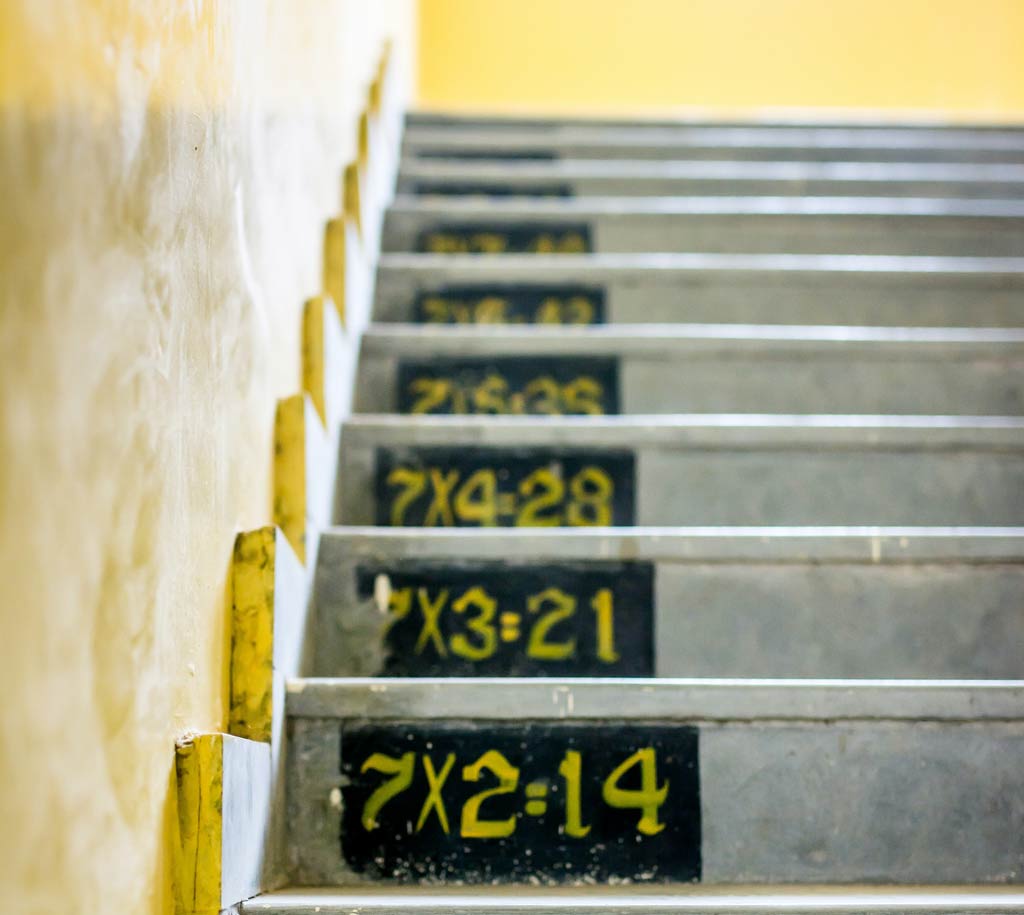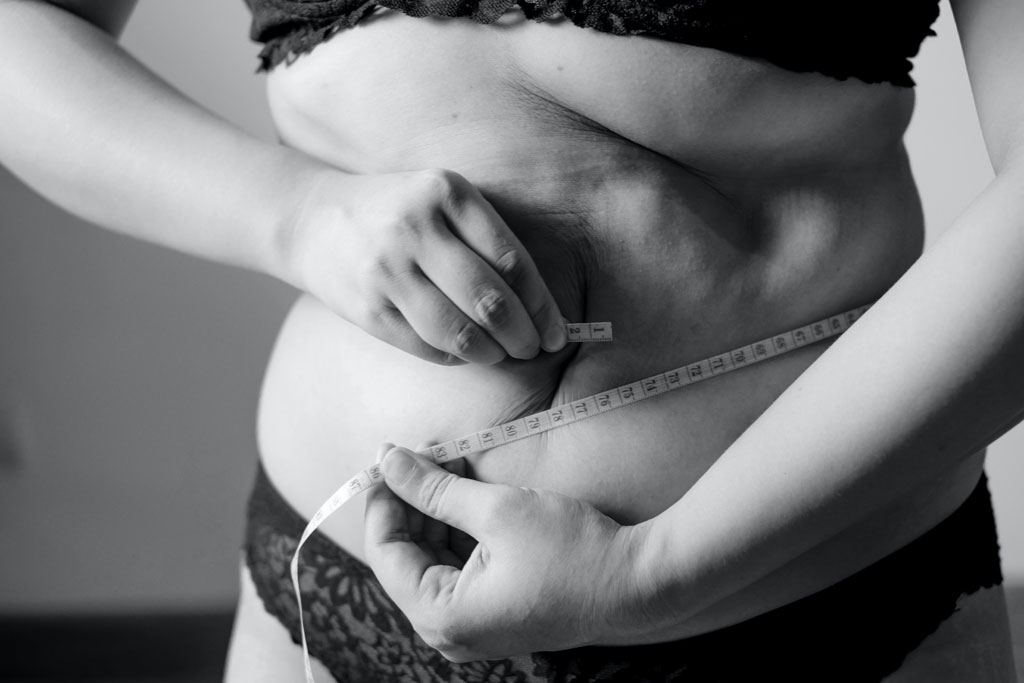How fast can you lose weight? Well, it depends on a lot of things. But mostly, it’s just math.
When I had my baby, I was excited about so many things, and one of them was getting my old body back.
It wasn ‘t because I hated my mama body (I didn’t, and still don’t). It was for practical reasons: It was harder to get around. I live in New York City, and the stairs here are no joke. While we moved to a ground floor apartment, there are still dozens of flights to climb in the subway alone.
I found myself not leaving my apartment because I hated coming up the stairs. I was used to it, yes, but I was used to it with 40 less pounds on my body and a fully functioning respiratory system.
Fat loss tricks: Are they real?
There are a gazillion ways to lose weight, and a simple search will help you find them. What most people (me included) are always looking for is a way to lose fat and still enjoy your life. I mean, the traditional way of losing weight can be pretty miserable, so finding a way to let the pounds melt off sounds… pretty darn amazing, right?
And some of them might work.
Some classic examples:
- Diet pills
- Homeopathic and herbal treatments
- Food combining
- Fasting or intermittent fasting
- Eating for your blood/body/hormones, etc
- Ketogenic diets
- Detoxes and cleanses
- Brand Name™ Diets
- Crash diets
There are probably a million more crazy ways to lose weight—supposedly, anyway. I’m not going to waste time on these. But there are two major categories that these weight loss “tricks” fall into.
The two types of fat loss tricks.
This post may contain affiliate links. Please see my full disclosure here.
Fat loss trick #1: Magical thinking.
The first type of fat loss trick involves some sort of magical thinking. It’s something that sounds too good to be true—and maybe is.
These magical thinking tricks usually promise something like:
- You can eat whatever you want
- You don’t need to diet
- You can eat whenever you want
- You won’t ever be hungry
- You don’t need to exercise
- You can still drink alcohol
- You can still have dessert
There might even be some pseudoscientific reason, like something will “jump start” your fat-burning mechanism or something.
Now, there are types in this category that do work, like ketogenic diets or diet pills. However, know that there is always a cost no matter what method you use. I know that many people swear by ketosis and it does wonders for them, at least for losing fat. I know also that many swear that it’s still a healthy diet, but Harvard Health and many others disagree, myself included. While I haven’t used it for significant weight loss, I think it feels terrible to eat. It doesn’t provide you with the best nutrition on a long term basis.
As for diet pills, well, it’s not a long term solution. You’re introducing a drug to your system, which you’ll eventually have to wean yourself off of. Furthermore, it will probably have a noticeable effect on your body in some way. I wouldn’t do it, but if you are desperate, make sure it’s under the supervision of a reputable doctor (as in, not Some Dipsh*t On The Internet, MD).
Fat loss trick #2: Distraction.
The other type of fat loss trick is only a trick in perception. It’s usually a variation of the tried-and-true way to lose weight, but it’s disguised as something else.
For instance, The Zone Diet was all the rage when I was first out of college, and celebrities swore by it. So, of course, I tried it.
What I found was that it was just another low calorie diet in disguise. The whole premise of the diet is a 40-30-30 balance (carbs, protein and fat), with suggested supplements and food choices. But it still boils down to a limited amount of food per day. However, it does emphasize proper macro- and micro-nutrients to help keep hunger at bay and your body functioning at its best.
But there isn’t a magic to this diet, or the balance it proposes. The weight loss is merely because of restricted calories.
Most diets are just calorie-restricted diet plans in disguise. But that’s not a bad thing.
According to the formula in the book, I would be eating 800 calories a day. That is way too little to sustain yourself on (especially if you’re an active 21-year-old), and the author knows this. The book suggests that if your daily caloric needs calculate to anything below 1100, adjust so that is your minimum.
1100 calories a day will make most people lose weight. It’s calorie reduction, pure and simple, with a guideline to make sure your macros are intact, your nutrition is still good and, hopefully, your hunger is minimal.
(But FYI, 1100 was and is too little for me to sustain myself on, especially if I’m exercising.)
Many, many diets fall into this category. And it’s not a bad thing. Calorie reduction can be tough, and any trick you can employ to ensure you’re not thinking about food or hunger 24/7 is worth it.
The only real, reliable way to lose weight.

Okay, ready? The one way to lose fat is this:
Consume less calories than you burn.
Yeah, I know. Duh, right? And it’s never what you want to hear. It’s also very simplistic and easily misconstrued. But there are some tricks to help make the journey less tedious and painful.
Let’s dig in.
The basics: calories in, calories out.
A calorie is just a measurement of how much energy it takes your body to burn food. It’s neither good nor bad. According to Merriam-Webster:
cal·o·rie/ˈkal(ə)rē/
calorie:
noun.1. the amount of heat required at a pressure of one atmosphere to raise the temperature of one gram of water one degree Celsius that is equal to about 4.19 joules
Merriam-Webster
That’s a lot more information than you need, however. All you need to know is the amount of energy coming in and its relativity to the energy going out.
Think of it like your bank account. If you want to have more money in your bank account, you need to deposit more money than you spend. If you want to owe money (I know, why would you want this? But bear with me…), you need to spend more money than you deposit.
So to gain weight, consume more calories than you spend. To lose weight, spend more calories than you consume. To maintain weight, keep the amounts you consume and spend about equal.
How to track calories in.

Tracking calories in is pretty easy these days, but it can be tedious. For one, you have to write down everything you eat.
Like, ev-er-y-thing (and clap between those syllables).
Time consuming as it is, the process of tracking your food intake may get you to cut down on needless snacking. I know I sometimes think, “Do I really want to figure out how many calories this spoonful of jam is? Do I even really need it?” Usually, the answer is no.
Back in the day, I had a little calorie book I used, and then I’d do guesswork for anything not in the book. These days, though, there are loads of sites and apps that can help you. They even have popular foods’ nutrition labels loaded in, which can cut down on time significantly.
My favorite is MyFitnessPal. It can also work like a wiki, adding in recipes and foods that other users have added. There’s also a macro window so you can set your macros, and it calculates your nutrition for the day so you can see where your vitamin deficiencies might be. For fitness, it also connects to your phone’s fitness tracker.
How to track calories out.
This one is a little trickier, but modern technology has made it easier. Just know that you will probably never be 100% correct on any measurement, but you can make an educated guess that will still help you on your fat loss journey.
First of all, you need to calculate your BMR, or Basal Metabolic Rate.
What is BMR?
BMR, or Basal Metabolic Rate, is the amount of calories your body needs to… well, stay alive. It does not account for how much energy you spend walking, exercising, or even sitting at a desk typing. We’ll figure that in later.
Calculate your BMR.
Here’s a handy dandy calculator to help you calculate this lil’ number. In general, you don’t want to eat less than your BMR. It’s okay once in a while, but not on a sustained basis, as it could damage your health and significantly lower your metabolism.
Note that if you weigh more, you require more calories to keep you at that weight. So in theory, it’s a bit easier to cut calories the bigger you are. This is part of the reason why those last five pounds are much harder to lose than the first five.
There are a few different ways to calculate BMR, and some online calculators will offer different formulaic options (Mifflin St. Joer, Revised Harris-Benedict, etc.). However, they will all give you similar results
Calculate your daily calorie needs.

Now, even if you’re very sedentary, you’ll burn more calories than just your BMR. You’ll need to walk, eat, digest, work, etc. If you exercise, that’s even more calories you’ll burn. What you need to know is your TDEE, or Total Daily Energy Expenditure.
I prefer to keep exercise calories completely separate from the regular daily calories I burn. For one, I don’t exercise every day, and exercise is very compartmentalized. It doesn’t spill over into my life, but it lives in its own space. For another, I like to think of exercise as a bonus, not as a given. On top of this, my daily calorie expenditure varies a lot. To play it safe, I usually say I’m sedentary (like at a desk job). Then I’m not over-calculating my calorie expenditure.
If you have MyFitnessPal, the TDEE will be done for you. You can choose your daily rate, and then add in how many extra calories you burn from an exercise session. It can also connect to your health app, calculating how much you’ve burned that day from walking or running. This way, your expenditure is unique to each day and not an overall guess.
If you want to calculate TDEE on your own, here is a calculator:
Math: How to lose, gain or maintain weight.

Now is the fun part. Well, it’s fun if you like math, which I do.
Each pound of fat is 3500 calories. To lose one pound, you need to have a calorie deficit equal to 3500 calories. Over one week, that’s a deficit of 500 calories per day (3500/7) beyond what you need to maintain your weight.
So, if your daily caloric needs are 2000 calories, if you cut those calories to 1500, in one week you will lose one pound.
One pound a week isn’t a lot, and it doesn’t sound too exciting, I know. But if you want to lose weight comfortably and without too much stress, one pound a week will work nicely.
But what if you need to lose a lot of weight, as quickly as possible?
How much weight can you lose safely?
So if one pound a week is a 500 calorie deficit per day, two pounds a week is a 1000 calorie deficit per day. That’s… a lot. That’s one huge meal or even two small-to-medium meals you’re cutting out. If your daily caloric needs are 2000 calories, that’s cutting what you eat by half.
You can see why two pounds a week of fat loss is actually a lot, and it requires a lot of work on your behalf. While it may not sound dramatic, you’ll probably find that two pounds a week is about the maximum that you can comfortably lose. And it’s what the experts and the CDC recommend, so it’s what I did.
So, how much weight can you lose in a month?

If two pounds a week is the maximum recommended weight loss, and each month is on average 4.33 weeks long, then the amount of weight you can safely lose a month is about 8.67 pounds.
Now, there are exceptions to this, of course. If you are sick, pregnant, have surgery or have any other extreme condition, then yeah, you can lose more than two pounds per week. But even if you’re obese, it’s still not recommended to lose much more. Why? It puts stress on your system and could cause problems, the least of which is gaining all that weight back.
For the purpose of this post, I’m dealing with the run-of-the-mill healthy (or healthy-ish) person who has some weight to lose.
What happens if you lose more weight?
Can we do three pounds a week? What does that look like? Well, if one pound is 500, two is 1000 and three is 1500. Or, do the math another way. 3500 calories times three is 10,500 calories a week that you need to cut out. Divided by seven, that’s 1500.
Going on our original example, that would take the necessary calorie intake down to 500 calories a day.
Yeah, no. Don’t do this.
500 calories is a medium sized meal, but just one. All day long. You’ll likely find that your BMR is way above 500 (mine is about 1100-1300 depending). To cut your calories down to 500 a day for many days would mean that your body can’t function properly. This is when you get adverse outcomes like hair falling out, brittle nails, dry skin, hormonal imbalances, amenorrhea, infertility, extreme fatigue, irritability, hair growing where you don’t want it, and many, many more.
You’ll also be very, very hungry. And hunger sucks. Two pounds a week is about the maximum that the body can handle from regular weight loss. It also means your body won’t be shocked into starvation mode, and that you’ll more easily transition back to a regular diet once you’ve lost the desired amount of weight.
What about exercising more to lose weight?

Even though I blog about exercise, and it helps you in so many ways, including fat loss, exercise is less than half of the fat loss equation. You can’t just eat what you’ve always eaten and exercise more (unless you’re in the NFL or something and I’m guessing that’s not the case).
Why? Well, exercise burns less calories than you might think. If you weigh 130 pounds and run four miles in 30 minutes, you’ll still only burn 365 calories. 365 calories is also roughly the amount of:
- Two bowls of cereal
- A peanut butter sandwich with light bread (and no jelly)
- A pint of Halo Top ice cream
- One serving (½ cup) of Haagen Dazs ice cream
- Three large bananas
- A grande mocha
- One microwave veggie burrito
It’s about the size of a normal-ish breakfast or a small meal. In other words, it’s not much. In most cases, it’s much easier to cut out 365 calories than to do the run. And exercise that’s moderate to strenuous should be done in moderate amounts, anyway. You can’t run all day every day.
In most cases, you’ll need to limit your food intake.
I know. It sucks. But there is one type of exercise that can help you out…
Walking.
Walking a lot will burn a lot of calories and help you reach your weight loss goals much easier. Now, the math doesn’t lie. An hour of walking only burns about 200-350 calories. The difference, though, is that walking is passive.
You can walk to the station, to work, to school, or around the park. It can be social, productive or meditative. You can usually forget you’re even doing it half the time. It’s like…free calories burned.
However, nothing comes good, fast and cheap. You need to sacrifice something, and with walking, it’s time. It takes an hour or two every day to reap the benefits, which isn’t always possible.
Continue losing no more than two pounds per week. However, adding some walking to your routine will help speed things along with minimal effort.
The best kind of exercise to lose weight.
Walking is amazing, yes, but ideally it should be supplemental to a regular workout plan, unless you have physical limitations.
Metabolic resistance training is by far the best all-around way to lose fat. The intensity will have an afterburn effect for up to 24 hours post-workout. Plus, building muscle from the strength training will increase your metabolism.
HIIT (High Intensity Interval Training) is a type of metabolic resistance training, and it’s amazing. If you’re new to this style of training, it will give your system a nice fat burning boost, particularly at the beginning. Don’t be discouraged when the fat burning effect isn’t as dramatic as time goes on; it’s still an amazing fat loss tool. You also shouldn’t do it every day, but space it out to no more than three times per week. If you exercise more than that, sprinkle in some strength training and/or moderate cardio.
If metabolic resistance training isn’t your jam, then just be sure to get strength training (two to four workouts) and cardiovascular exercise throughout the week.
Calories in: the pitfalls of calorie counting and fat loss.

I ended up writing an entire post about how to lose weight by watching your calories, but listen—you have to do this right, otherwise it can lead to disorderly eating.
After all, if the goal is to lose weight as quickly as possible, it can be tempting to go to drastic measures. After all, if cutting calories is good, then isn’t cutting as many as possible even better?
No. No no no no no nononononono.
You don’t want to develop an eating disorder, trust me. It will mess up how you enjoy food—and life—for a very long time, if not forever. It won’t make you happy, and it won’t make you beautiful.
Skinny isn’t beautiful. Skinnier isn’t beautiful.
Healthy is beautiful. Self-love is beautiful. Joy is beautiful.
Calorie counting in itself is misleading, because every unit of food is counted the same way. This makes ice cream as valuable as asparagus, when they shouldn’t be (though ice cream is damn delicious). While it’s nice to have a little leeway if you want a special treat, you should always make nutrition your number one priority when cutting calories.
How to count calories the right way.

There are many ways to count calories without actually counting calories. Some programs have point systems with units or servings. This is practical and helpful, and more realistic to what you’re trying to accomplish.
I have been counting macros, and it’s really worked for me.
What are macros?
Tracking your macros will not only help ensure you’re getting the best nutrition possible, it will also make dieting easier for you. The body is more satisfied with nutrient-dense food than empty calories. You’ll have less hunger pangs if you count your macros properly and consume quality foods.
“Macro” is short for “macronutrient.” There are three macronutrients we consume: protein, carbohydrates and fat. By counting macros and not just overall calories, you can more easily stay on track with your weight loss goals and your nutrition.
However, not all macros are equal. You still want to make sure you’re having high-quality macros: quality meats and proteins, healthy fats, and fresh fruits and vegetables. Minimize processed food, sugar, soda, fried foods and grains that aren’t whole.
Check labels! If you’ve never done this before, you’ll be surprised how much sugar is added to everything. Like, everything.
How I lost my 20 pounds of postpartum baby weight.
When I had my baby and finally decided to get back in shape, I tried to do it as swiftly as possible. Summer was coming, and I wanted to be comfortable in the heat. I had gained about 40 pounds from the baby, and 15 or 20 pounds came off easily after delivery.
At the end, I had about 20 extra pounds to lose. Not a lot by any means, and I was still in a normal weight range, but I wanted to feel me again.
As I mentioned, I used an app to count my macros. I set my protein to 55 grams a day (or 20%) because I was pseudo vegetarian at the time, and my calories came to about 1200 per day. If I exercised, it usually added 300-400 extra calories which the app suggested I consume.
With a newborn, I was mostly sedentary, tending to the baby. However, I did make an effort to do a walk almost every day, which added about 9000 steps (250 calories or so) to my calorie expenditure. It didn’t seem like much, but when I couldn’t do my walks for a week, my weight loss stalled. Luckily, it picked up once I started again.
It took me about ten weeks to hit my weight loss goal. Here is me a couple weeks after I started (June 1), then right as I ended, July 30:


How I check macros and count calories.
I should write an entire post on this, but I’m really not an expert, either. I do what works for me, and that might not work for you. But I would check out apps.
Like I said, I liked MyFitnessPal for tracking everything. People also like FoodNoms, MyPlate, Nutritionix, FatSecret, Cronometer, My Macros+, LifeSum, LoseIt! and Carb Manager.
Keep the big picture in mind: your weight loss goals.
Tracking food, no matter what method you use, takes getting used to. If you let yourself get into it, it can even be kind of fun, like a game. I always find that it takes a few days to get into the groove, and once I do, it’s not so bad. The trick is to get into the mindset of eating for fuel and not for pleasure.
And once you start seeing results, you have more reason to stick with it. I’m not going to lie, though: Losing weight and eating a calorie deficit can be a bummer at times. Taking the pleasure out of food can feel like you’re taking the pleasure out of life. But you’re not. And remember, this is all temporary.
How to know if you need to adjust your weight loss plan.
Managing weight loss over many weeks or months may not be straightforward. You may plateau at times, only to “catch up” a week later. It happens. But if you’re not catching up, you may want to consider calorie cycling, where you take a break from your diet to re-center your nutrition and approach to food. This can boost your metabolism when you return to a diet a couple of weeks later, though you make take a small step back in the interim.
Regardless, as you lose weight, the same plan will result in fewer pounds lost every week. This is because as you lose mass, your BMR and caloric needs will go down. Adjust if you need to, but again, don’t plan on losing more than two pounds a week. One pound a week might be more realistic as you reach the finish line.
It’s a marathon, not a sprint, and don’t trust anyone who says otherwise.

You may think you need to lose the weight quickly, but you don’t. You really don’t.
Would you rather lose 20 pounds in a month, only to gain it all back three months later? Or would you rather keep it off forever, but lose only eight pounds in a month?
Every few years there comes along some cleanse or detox that makes big promises as long as you follow the diet perfectly. And the “diet” is something nutritionally deficient, like lemon and maple syrup, or only tea, or only grapefruit juice, or nothing at all.
These are technically fasts, and I don’t recommend doing any fast for longer than a day or two, at least not for losing weight. You’ll lose weight initially, but most of it will be water weight, and then your body will go into starvation mode. It sees nothing coming in, and says, “Oh crap! We’re out! Let’s conserve what we have!” Then your metabolism will go down as your body tries to keep you alive.
Yes, keep you alive.
So don’t do it for extended periods, and don’t do it to lose fat. Once you stop the detox/cleanse/diet, your body will hold on to those calories, too, and you’ll be back where you started very quickly. There is no magic in detoxing the body or cleansing your bowels or whateverthe$%&*. It’s bull, and it’s being sold to people who are desperate.
Look into intermittent fasting.
If you do better not eating at all rather than regulating your intake evenly, look into intermittent fasting. This is where you eat all your meals in a short period of the day and fast for the rest. It has its ups and its downs, and many people swear by it.
Regardless, the more manageable you make your weight loss, the better it will stay off. Play the long game.
Final thoughts on how much weight you can lose in a month.
Plan to lose eight to nine pounds a month, and remember that slow and steady wins the race. You’re not in a hurry.
Eat good quality foods so that you aren’t hungry throughout the day and tempted to cheat on your diet. Tracking your food with an app is an easy way to make sure you’re getting the right amount of calories, macronutrients and micronutrients.
Make sure you’re active. Be sure to incorporate both strength training and cardio in your exercise routine. Supplement with walking if you have the time.
Enjoy losing weight as much as you can. It’s empowering to have goals and achieve them, especially if you’re not too hard on yourself.
Don’t diet to enjoy life. Enjoy life as you diet.
Related articles how much weight you can lose.
- Should You Do Weights or Cardio First for Fat Loss?
- What is HIIT and Why You Should Be Doing It
- The Ultimate Postpartum Workout Plan You Can Do at Home

